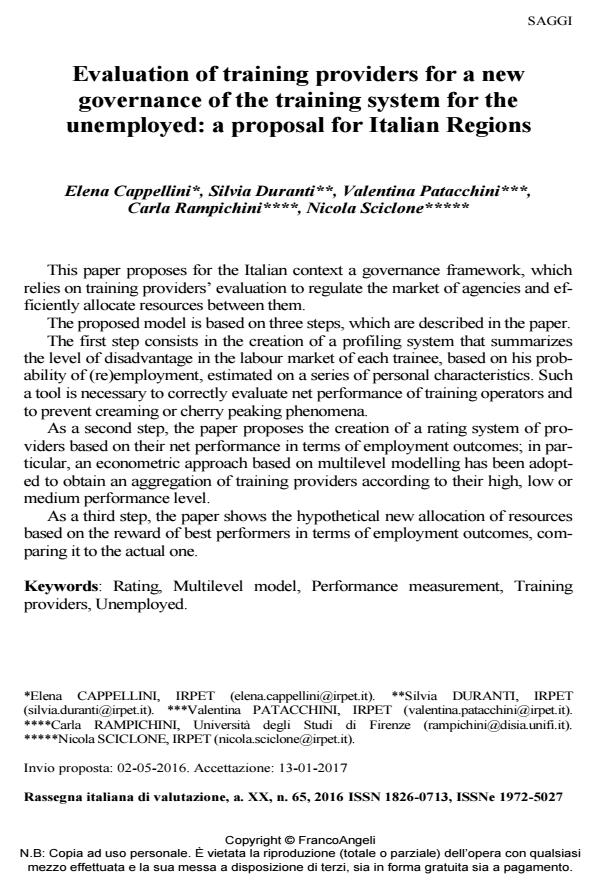Evaluation of training providers for a new governance of the training system for the unemployed: a proposal for Italian Regions
Titolo Rivista RIV Rassegna Italiana di Valutazione
Autori/Curatori Elena Cappellini, Silvia Duranti, Valentina Patacchini, Carla Rampichini, Nicola Sciclone
Anno di pubblicazione 2017 Fascicolo 2016/65
Lingua Inglese Numero pagine 17 P. 27-43 Dimensione file 641 KB
DOI 10.3280/RIV2016-065003
Il DOI è il codice a barre della proprietà intellettuale: per saperne di più
clicca qui
Qui sotto puoi vedere in anteprima la prima pagina di questo articolo.
Se questo articolo ti interessa, lo puoi acquistare (e scaricare in formato pdf) seguendo le facili indicazioni per acquistare il download credit. Acquista Download Credits per scaricare questo Articolo in formato PDF

FrancoAngeli è membro della Publishers International Linking Association, Inc (PILA)associazione indipendente e non profit per facilitare (attraverso i servizi tecnologici implementati da CrossRef.org) l’accesso degli studiosi ai contenuti digitali nelle pubblicazioni professionali e scientifiche
This paper proposes for the Italian context a governance framework, which relies on training providers’ evaluation to regulate the market of agencies and efficiently allocate resources between them. The proposed model is based on three steps, which are described in the paper. The first step consists in the creation of a profiling system that summarizes the level of disadvantage in the labour market of each trainee, based on his probability of (re)employment, estimated on a series of personal characteristics. Such a tool is necessary to correctly evaluate net performance of training operators and to prevent creaming or cherry peaking phenomena. As a second step, the paper proposes the creation of a rating system of providers based on their net performance in terms of employment outcomes; in particular, an econometric approach based on multilevel modelling has been adopted to obtain an aggregation of training providers according to their high, low or medium performance level. As a third step, the paper shows the hypothetical new allocation of resources based on the reward of best performers in terms of employment outcomes, comparing it to the actual one.
Parole chiave:Rating, Multilevel model, Performance measurement, Training providers, Unemployed.
Elena Cappellini, Silvia Duranti, Valentina Patacchini, Carla Rampichini, Nicola Sciclone, Evaluation of training providers for a new governance of the training system for the unemployed: a proposal for Italian Regions in "RIV Rassegna Italiana di Valutazione" 65/2016, pp 27-43, DOI: 10.3280/RIV2016-065003